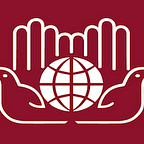Urbanization and the Difficulties it Poses to Humanitarian Work Today
If one were to look back upon the landscape of the world in 1500, they would find that nearly everyone in the world lived in a rural area. In a time where technology was limited, most people grew their food, or hunted for it, living a life often isolated on large plots of land. Over time, this way of life has changed as people found themselves living faster lifestyles, moving to urban areas, and purchasing their food rather than growing it themselves. This process is known as urbanization.
Today, over half of the people around the globe live in metropolitan areas (UN Department of Economic and Social Affairs); around 80% of people (245 million) in the U.S. live in cities or the surrounding areas (U.S. Global Change Research Program). By 2030, National Geographic projects that two-thirds of the human population will live in urban areas. According to the UN Department of Economic and Social Affairs, this change is occurring at different rates in different places. In more developed nations, a large portion of people already resides in urban areas, whereas more rural countries are expected to urbanize at a rapid pace.
This change, from the time of the industrial revolution, brought a level of convenience to communities. Necessities and resources such as electricity, plumbing, and an education system soon became easily accessible. However, while urbanization has its pros, it also has its cons. With urbanization comes poverty, overcrowding, and pollution. These causes contribute to climate change, and health issues, most of which disproportionately affect people in lower socioeconomic levels.
With urbanization on the rise, so is humanitarian work. Elizabeth Ferris of the Brookings Institute points out ten important observations on humanitarian work in urban settings which make this work difficult:
“1. Urban areas exhibit visible and often extreme disparities in income and wealth.
2. Urban areas are physically congested places.
3. Urban areas are violent places.
4. The actors in urban settings are diverse.
5. Urban populations tend to be more mobile.
6. Urban populations are more politically active and have more access to information than those in rural areas.
7. Determining beneficiaries for humanitarian programs is particularly difficult in cities.
8. It seems more difficult to discern the boundaries between humanitarian and development assistance in urban areas.
9. Finding solutions for those displaced or otherwise affected by emergencies may not be more difficult in urban than rural settings, but it involves a unique set of challenges.
10. Humanitarian actors have tended to see conflict situations and natural disasters as two distinct phenomena.”
All of these factors make it difficult for humanitarians to work in urban settings, especially when the threat of climate change comes into focus since urban areas are especially susceptible to the effects of climate change. Humanitarians must turn their attention in the upcoming years to urban areas and innovate their design towards the massive amount of climate change-related work that will have to be conducted in cities around the world.
Written by Alexandra Huelbig, Innovation and Design Intern, Summer 2019
About the IIHA
The Institute of International Humanitarian Affairs (IIHA) prepares current and future aid workers with the knowledge and skills needed to respond effectively in times of humanitarian crisis and disaster. Our courses are borne of an interdisciplinary curriculum that combines academic theory with the practical experience of seasoned humanitarian professionals. The IIHA also publishes on a wide range of humanitarian topics and regularly hosts a number of events in the New York area, including the annual Humanitarian Blockchain Summit and Design for Humanity Summit.
For media inquiries, please contact: Camille Giacovas, Communications & Research Officer, IIHA cgiacovas@fordham.edu
